Kajang style recipe
|
Materials and Methods |
| The marinade |
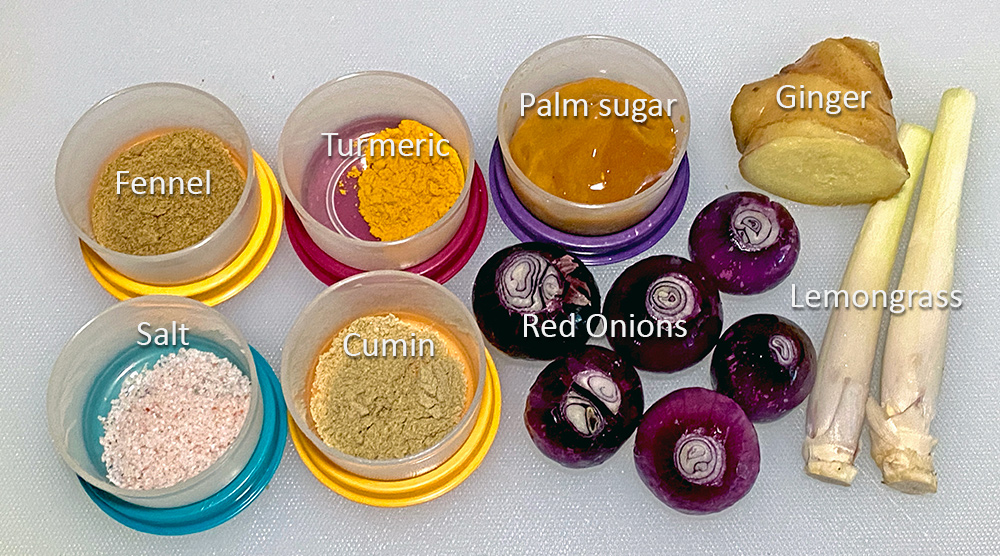 |
|
2 stalks lemongrass (use only the white
parts) 6 small red onions 1 inch ginger 1/2 teaspoon ground cumin 1/2 teaspoon ground fennel 1/2 teaspoon ground turmeric 1 table spoon palm sugar 1/2 teaspoon salt Water as required for blending 2 tablespoons of vegetable oil |
Blend all the ingredients 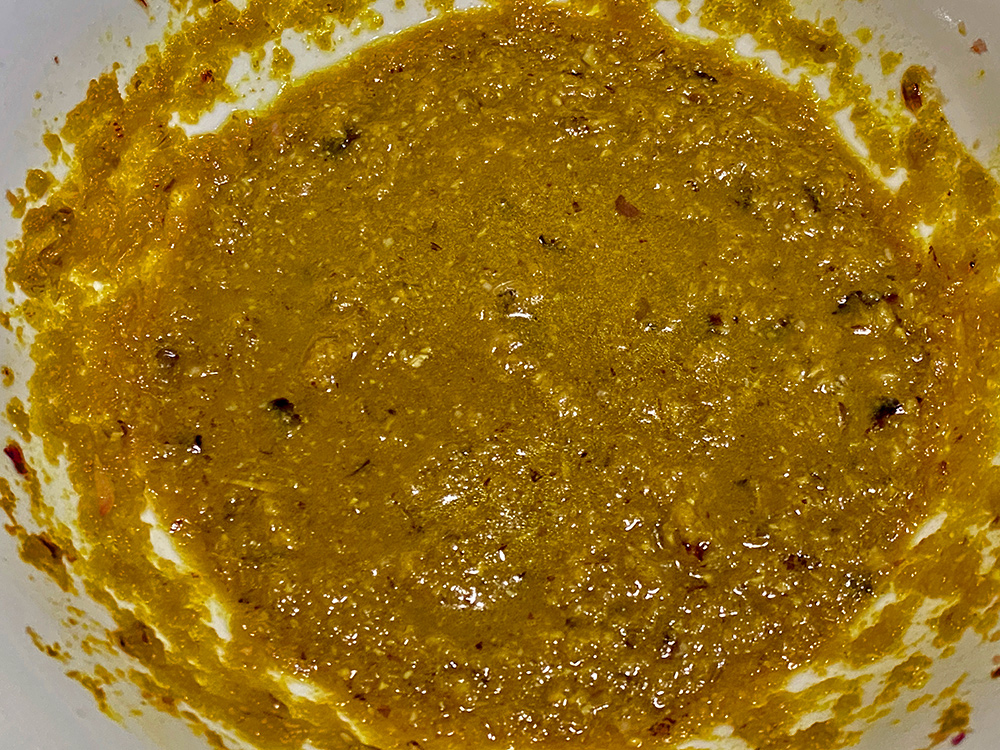 This is the marinade after blending |
| Add the marinade to your favourite
meat cuts into pieces suitable in size for skewering on satay
sticks Marinade the meats overnight in a refrigerator 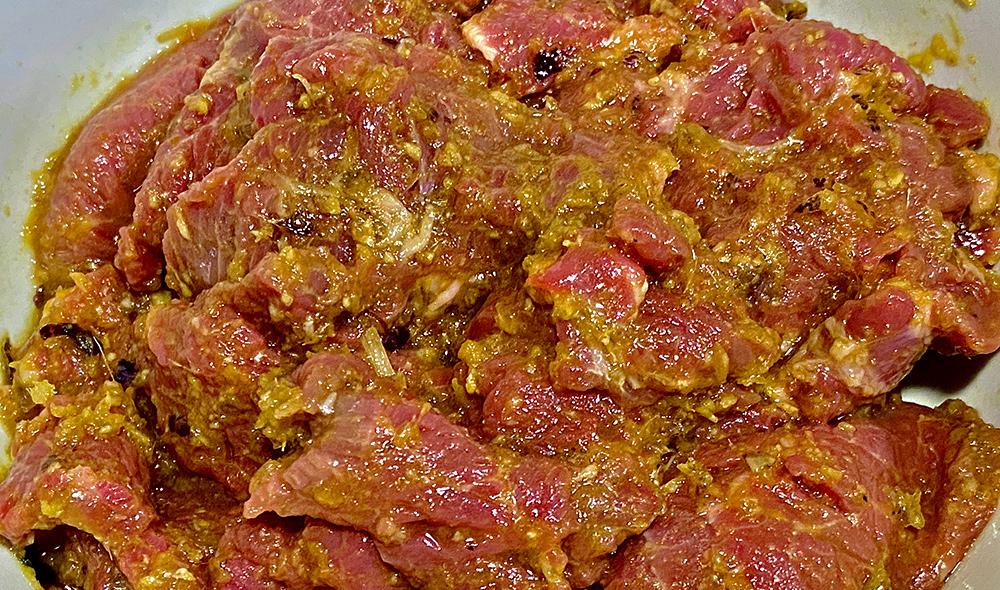 Chilled Australian grassfed beef tenderloin with the marinade |
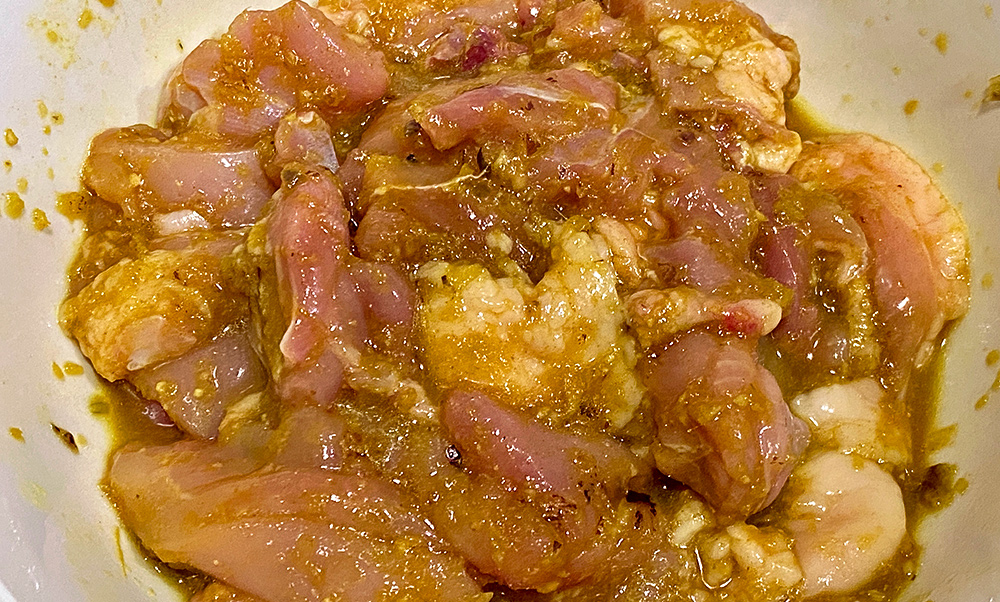 |
|
Chicken thigh pieces with the marinade |
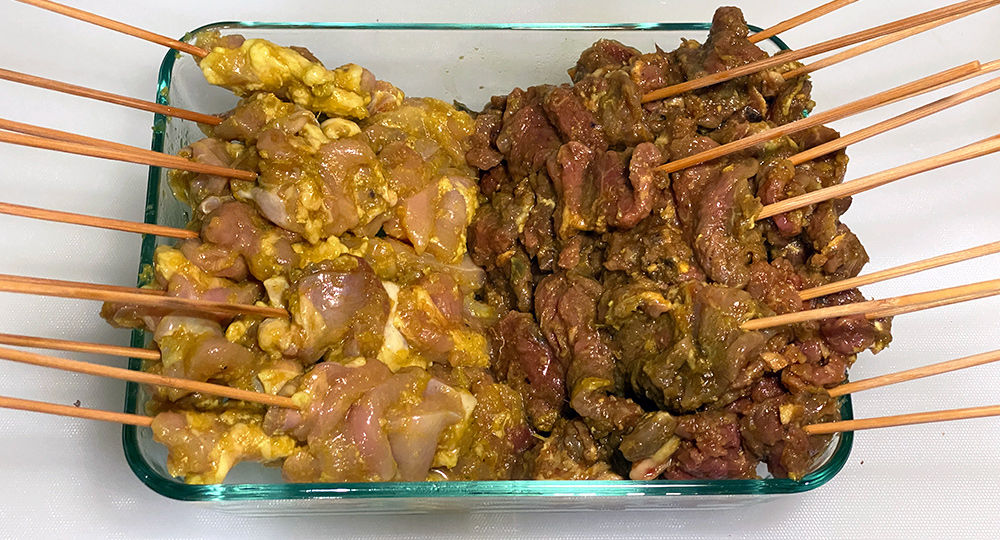 Chicken and beef skewered on bamboo sticks (soaked overnight to help prevent burning during grilling) after overnight marination. The skewers are grilled on a BBQ until slightly charred (for taste). Baste with oil (try coconut oil) during grilling. |
| The Satay Sauce |
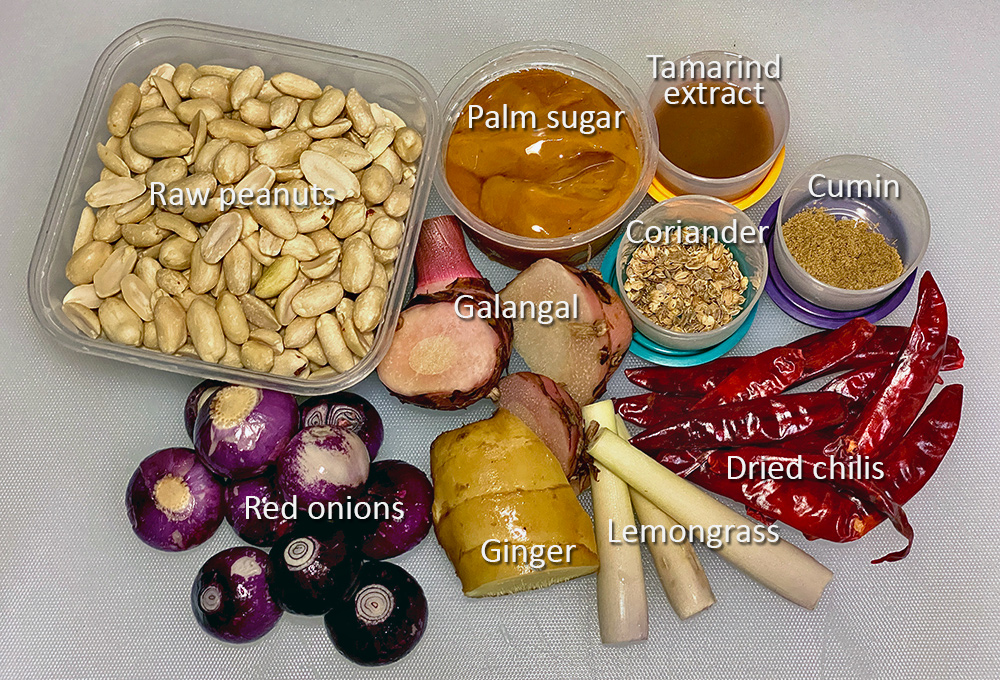 200 g raw peanuts 10 small red onions 3 stalks lemongrass 2 inch galangal 2 inch ginger 10 dried chilis 1/2 teaspoon ground coriander 1/2 teaspoon cumin 4 tablespoons palm sugar 1 table spoon tamarind extract from 1 teaspoon of tamarind added to 50 mL of water 3 table spoons of vegetable oil Salt to taste Water as required to bring mixture to the desired consistency Blend the ingredients except the peanuts, palm sugar and tamarind extract Fry the blended ingredients until the oil separates out Roast the raw peanuts til browned Grind the peanuts to a coarse mix Add the ground roasted peanuts, palm sugar and tamarind extract and slow simmer for an hour or more (the longer the better). Add water if the mixtures becomes too thick. |
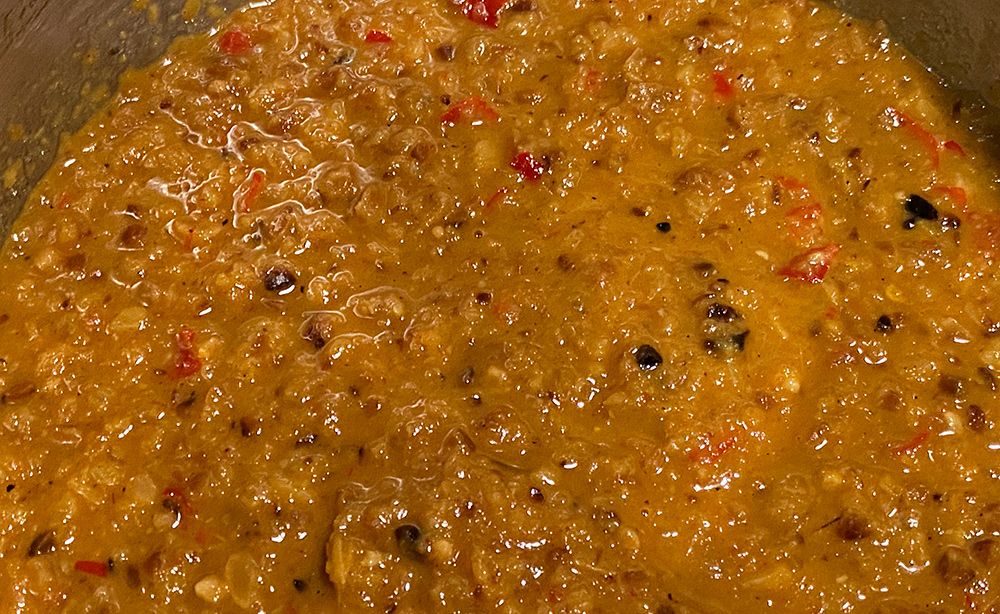 The cooked satay sauce 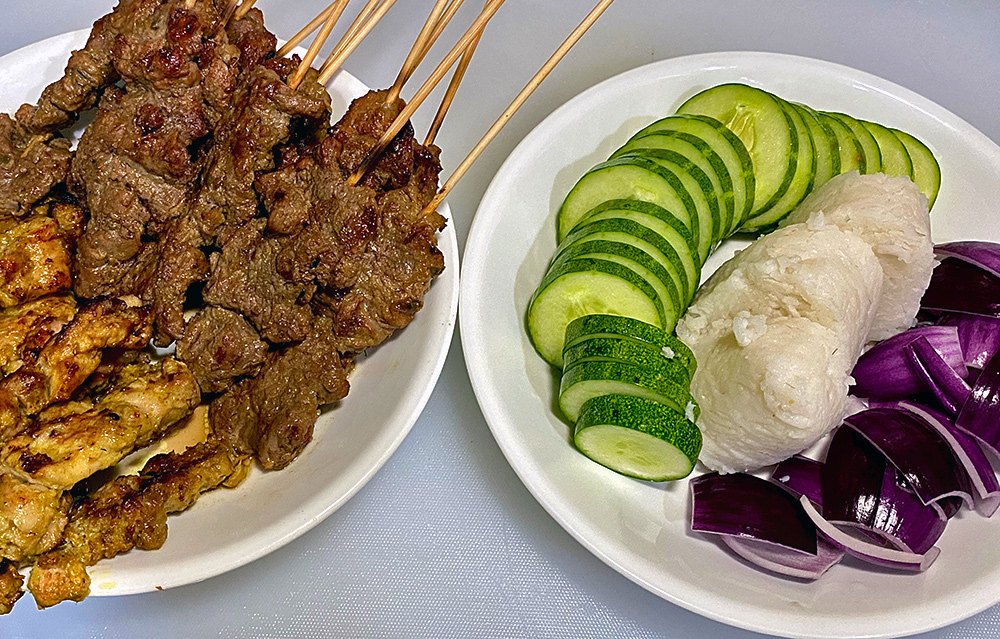 Serve with pressed rice cake (or ketupat), sliced red onions and cucumber |
|
Results and Discussion Consistency of the sauce: There is really no emulsifying agent in this recipe such that the sauce tends to be watery if too much water is added. To give better consistency, a thickener such as starch can be added as a slurry stirred into the sauce during cooking. Peanuts: Roasted instead of raw peanuts can be used to save time; use of two grinds, a coarse and a fine would be better as the fines will help thicken the sauce (you may wish to try adding peanut butter for modifying the texture). Beef cut: Chilled beef tenderloin proved to be too tender a cut for satay. This cut is already tender and overnight marination makes over-tender for good mouth-feel. For more bite, use a different cut such as sirloin or rump. Organoleptic assessment: The spices blend for both the marinade and sauce are adequate although those who prefer a more spicy outcome should increase the amounts of the fragrant ingredients. Chili spiciness can adjusted at the end by adding chili powder or oil. The sauce can be made more savoury by adding your favourite chicken stock powder (I use Knorr) to taste. This work has been published without peer review and without requiring any modifications. Nice to be author and editor at the same time isn't it (all too familiar to some touched by Beall's Lists)? |
|
01 May 2020 |
Created by Clem Kuek